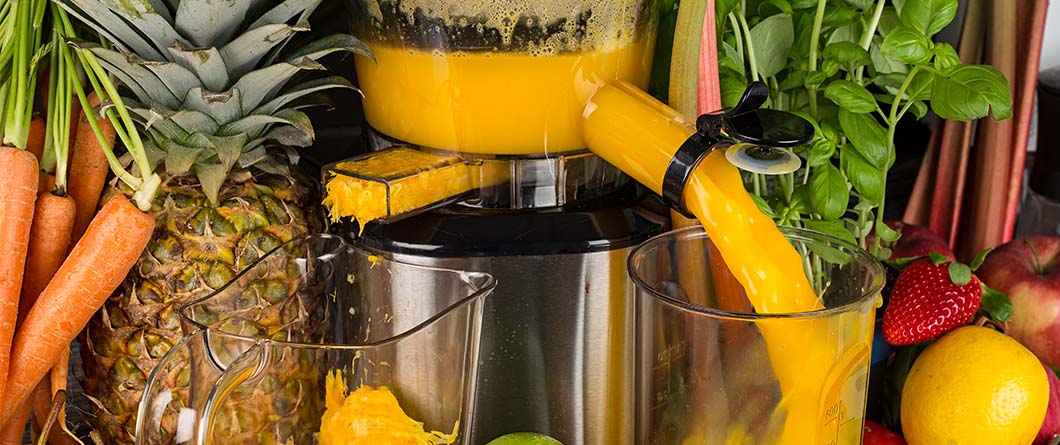Fresh Fruit & Vegetable Juices: How to Make Them Quickly at Home
“Vitamins and power, what they give me is a fortune” goes a line from “The Vegetable Song.” We all know how important it is to eat fruits and vegetables—especially raw—to reap their health benefits. If you struggle to eat enough produce in solid form, try them as fresh juice with pulp.
Key point: fresh-pressed. It’s crucial to distinguish 100% fresh fruit/vegetable juices from market “natural” juices made from concentrate. Concentrate is what’s left after removing water from the produce—it’s mixed later with water, sugar or sweeteners, coloring, and flavors. That’s why making 100% fresh juice at home with an electric juicer is far superior.
Benefits of a Good Juicer
An efficient juicer extracts up to 95% of the juice from fruits and vegetables. Depending on the model, you can retain pulp for extra fiber, enzymes, and antioxidants. Fresh juice from a juicer is perfect for children’s breakfasts and for adding to cocktails—keep both a juicer and your cocktail shaker handy!
Choosing the Right Juicer
- Juicing method: Centrifugal juicers spin at high speed; cold-press (slow) juicers and manual presses extract by crushing or pressing.
- Juice quality: Cold-press and manual methods preserve more nutrients; centrifugal juicers work faster but with some nutrient loss.
- Compatible produce: Citrus-only manual presses are great for oranges and grapefruits. For mixed fruits/vegetables—apples, celery, kale—choose a multifunctional electric or slow juicer. Don’t discard the pulp—use it in baked goods, veggie burgers, sauces, or fruit bars.
- Cleanup: Electric juicers splash less; slow juicers have detachable parts often dishwasher-safe; manual presses clean quickly with a damp cloth.
- Noise level: Manual presses are quietest. Electric models typically run between 50–70 dB; below 60 dB is ideal for early mornings.
Health Benefits of Fresh Homemade Juices
- Rich in antioxidants to fight oxidative stress.
- 100% natural ingredients, no additives or preservatives.
- Hydrating—especially cucumber or watermelon juice, which replenish fluids and electrolytes.
- Practical way to increase vegetable intake for picky eaters or children.
- High in vitamin C and other immune-boosting nutrients.
Juicing Tips
- Choose fresh, ripe produce; wash thoroughly.
- Peel non-edible skins (citrus, pineapple); keep edible peels (apple, pear, cucumber) for fiber.
- For weight loss, follow an 80/20 rule: 80% vegetables/greens, 20% fruit.
- Mask strong vegetable flavors for kids by blending with sweeter fruits.
- Add ginger, turmeric, or mint for anti-inflammatory and digestive support.
- Drink juice immediately or store airtight in the fridge up to 24 hours.
6 Quick & Healthy Juice Recipes
1. Detox Juice: Apple, Carrot & Ginger
- 2 green apples
- 3 large carrots
- 2–3 cm piece of ginger
- ½ lemon
Wash, chop, juice, and serve immediately.
2. Energizing Citrus & Ginger Juice
- 1 pink grapefruit
- 2 oranges
- Small piece of ginger
Juice and serve.
3. Vitamin C Booster: Orange, Carrot & Beetroot
- 3 oranges
- 2 large carrots
- ½ small beetroot
Peel, juice, stir, and enjoy.
4. Tropical Pineapple, Apple & Mint Juice
- ½ fresh pineapple
- 2 apples
- Fresh mint leaves
Juice pineapple and apples, then stir in mint.
5. Hydrating Watermelon & Strawberry Juice
- 2 slices seedless watermelon
- 5–6 strawberries
- Fresh mint leaves
Juice, add mint, and stir.
6. Green Revitalizer: Spinach, Cucumber & Lemon
- Handful of fresh spinach
- ½ cucumber
- 1 green apple
- ½ lemon
Juice in your slow juicer, mix, and enjoy.
Making fresh juice daily is an easy way to boost your produce intake. Follow these tips to pick the best juicer and enjoy delicious, nutritious drinks with minimal effort.


